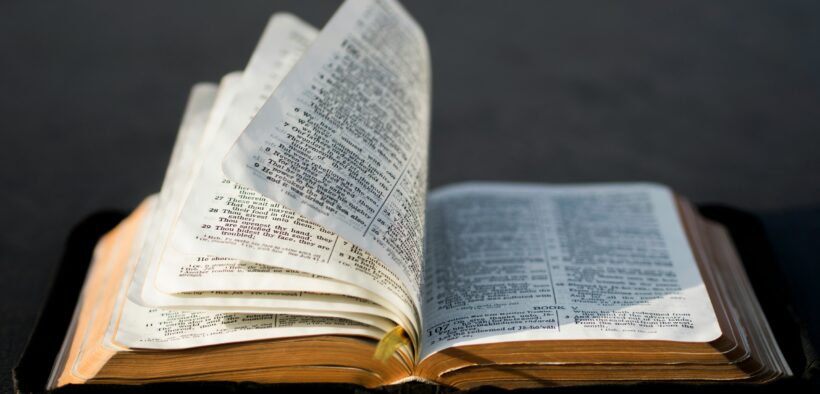Church and State in Modern America
Share

Image Credits: @aaronburden on Unsplash (Unsplash License)
Throughout modern-day public discourse, the political right and left alike debate the boundaries of the separation of church and state. The relationship between the church, the state, and the free individual has formed a divisive fault line across America’s political ideologies. As America enters what has been dubbed a “Secular Age,” there has been a resulting increase in religious-based politics nationwide.
An introduction to the separation of church and state: The founding fathers’ intentions
The concept of the separation of church and state was first articulated nearly four centuries ago by Roger Williams, a clergyman for the Church of England. Throughout his work, Williams exemplified the world as a wilderness and the church as a garden. Opening the barrier between the two polluted the garden with the wilderness—in other words, he believed politics corrupted religion. Williams founded Providence, modern-day Rhode Island, around the guarantee of freedom of religion.
The idea of separation between church and state expanded from there. Just over a century later, Virginia adopted Thomas Jefferson’s Virginia Statute for Religious Freedom in 1786. The bill affirmed the freedom to form religious opinions and prohibited Virginia’s government from compelling one religion. Five years later, the ratification of the Bill of Rights enabled the First Amendment to restrict the federal government’s ability to establish a national religion or prohibit free exercise. Some groups, such as the Danbury Baptist Association, feared religious persecution from the First Amendment. A decade after the amendment’s passage, the group wrote a letter to Jefferson expressing its fear. Jefferson’s response asserted that the First Amendment’s free exercise and establishment clauses built “a wall of separation between Church & State.”
For over a century after that, there was little debate on the interpretation of the First Amendment. Everson v. Board of Education (1947) became the first case to align with Jefferson’s metaphor of a wall of separation. The case held that the Establishment Clause is protected by the Fourteenth Amendment’s Due Process Clause, making it applicable to state laws. In Lemon v. Kurtzman (1971), the Court held that a statute must pass a tripartite test to avoid violations of the Establishment Clause. The “Lemon” test permits government involvement in religion as long as the purpose is secular, assistance does not promote or inhibit religion, and the church and state are not excessively entangled.
Recent Supreme Court cases: Shrinking the wall between church and state
The Supreme Court began the third decade of the twenty-first century by releasing a series of decisions that reversed decades-old precedent. In Carson v. Makin (2022), the Court held that a state cannot require “nonsectarian” status for parents to access otherwise generally available educational aid assistance. Maine, and other states, had previously prohibited the use of public funds to finance religious institutions, but Chief John Roberts and five other justices found it in violation of the First Amendment’s free exercise clause. The case parallels an issue in 1784 where the Virginia General Assembly introduced a bill that would require all taxpayers to pay contributions to the Christian religion. In response, James Madison wrote a letter titled “A Memorial and Remonstrance,” where he asserted that the bill was a “dangerous abuse of power.” He argued that the guarantee of religious liberty is “held by the same tenure with all our other rights,” and government control or enforcement of religion is a step towards government infringement on other guaranteed rights.
In Kennedy v. Bremerton School District (2022), the Court ruled in favor of a football coach who required his students to pray before games while on public school property. The Court held that the free exercise and free speech clauses of the First Amendment protect an individual engaging in religious observances from government interference. The Constitution, they claimed, does not mandate or permit the government to suppress religious expression. As a result, the Court abandoned the Lemon test and replaced it with a consideration of “historical practices and understandings.” Kennedy’s decision opposes the precedent established in Engel v. Vitale (1962), which struck down prayer in public schools, and Lee v. Weisman (1992), which struck down the use of indirect coercion to force students to act religiously.
Additionally, in Dobbs v. Jackson Women’s Health Organization (2022), the Supreme Court overturned the precedent established in Roe v. Wade (1973). The Court found that the Constitution does not grant a right to abortion and returned the power to restrict or ban abortions to the states. Additionally, to assess the viability of abortion precedent from then on, the Court created a test of factors that examined the nation’s history and tradition in relation to distortions of the law. Justice Sonia Sotomayor, one of the dissenting justices, recognized that the argument was centered around religion. During the oral argument, she asked the lawyer how his “interest was anything but a religious view?” She followed it by asserting that “when you say [abortion] is the only right that takes away from the state the ability to protect a life, that is a religious view, isn’t it?” After Dobbs, states across the nation used religious-based reasoning to restrict abortion.
These three cases come amidst other recent Supreme Court cases that continue to chip away at the precedent separating church and state. Trinity Lutheran Church of Columbia, Inc. v. Comer (2017), Masterpiece Cakeshop, Ltd. v. Colorado Civil Rights Commission (2018), and 303 Creative LLC v. Elenis (2023) are a few more cases where the Court valued personal belief over religious freedom. Jefferson’s wall of separation between church and state continues to shrink, raising concerns about the point at which permitting and enabling discrimination will supersede the guarantees of religious liberty.
Recent state legislation: Religion’s influence on the law
There has been a recent increase in conservative politicians advocating for the collapse of the separation of church and state. Christian ideals influence legislators to draft laws and bills that align with their religious beliefs. In particular, they assert their religious politics into the most contentious matters of politics, such as abortion, education, and LGBTQ+ rights.
By early 2022, thirteen states had enacted trigger laws that would automatically ban abortion if the precedent was ever overturned. Those laws were immediately triggered within hours of the Court releasing the Dobbs decision. Other conservative-leaning states quickly followed suit by drafting and passing legislation to ban or limit access to abortion on the basis of religion. For example, Missouri’s trigger law declares that “Almighty God is the author of life,” and its lawsuit claims that the lawmakers quoted Psalms 119 while drafting the law. Similarly, in Indiana and Kentucky, lawyers are representing Jewish groups who claim that their states’ bans infringe not only on their religious beliefs and freedoms. Some faith systems, including Judaism, the Presbyterian Church, the Unitarian Universalist Association, and the United Church of Christ, support the right to abortion.
The role of religion in public schools is also one of the most controversial issues concerning the separation of church and state. Many Christian conservatives believe it imperative that God’s word is taught in schools. For instance, lawmakers in Texas tried to pass a bill that would require the Ten Commandments to be legibly displayed in every school classroom. While that bill did fail, the state did pass one that allows school districts to employ religious chaplains in place of guidance counselors and social workers in public schools. Similarly, in Oklahoma, a state board voted in favor of funding the nation’s first religious public charter school, despite its violations of the state’s constitution.
Christian-based legislation is also being used to discriminate against the LGBTQ+ community. In Florida, Governor Ron DeSantis signed the “Don’t Say Gay” law to prohibit discussion about sexual orientation and gender identity in certain grade levels, amongst other criteria. Governor DeSantis also passed a law banning transgender girls from participating in school sports. He signed the bill against the backdrop of a private Christian school known for its prejudice against the LGBTQ+ community on the first day of Pride Month. Other legislators across the country are now using religious-based arguments to ban trans-athletes from sports.
Additionally, at least twenty-two states have enacted laws or policies banning or restricting gender-affirming care for minors, most of which are currently being challenged in court. Courts nationwide are delivering mixed verdicts—Georgia blocked a ban on hormone replacement therapy for minors, whereas Alabama upheld a ban on puberty blockers and hormones for minors. In Oklahoma, Senator David Bullard introduced a bill, called the Millstone Act, that would ban gender-affirming care for anyone under the age of twenty-six. As Senator Billard explained in his press release, the Millstone Act was named after Matthew 18:6.
Conclusion: Looking forward
While the United States is more secular than ever before, it is still plagued with religious-based politics. The presence of religion in the political arena has been on an upward trend that is not likely to end soon. The Supreme Court currently holds a conservative super-majority of six justices. Ideologically controversial issues have continuously resulted in a 6 to 3 vote favoring conservative and religious ideals. Republicans also currently hold a majority in the U.S. House of Representatives, and they only need to net two seats to win back control of the Senate in 2024, which predictions find historically favorable. Additionally, Republican candidate and former President Donald Trump is currently predicted to win the 2024 election. As the Republican party is set to hold a considerable amount of power in the national political arena, religion will likely continue to be a present force within the country’s politics in the coming years.


Want to get involved?
Connect with us! Connect with us!